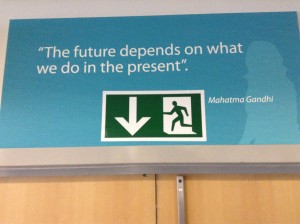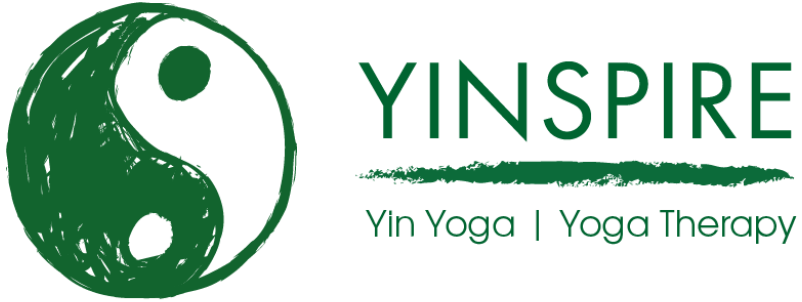 Que Sera, Sera
Que Sera, Sera
Whatever will be, will be
The futures not ours to see
Que Sera, Sera
What will be, will be
The lyrics are well known, written by Jay Livingston and Ray Evans, sung by many, most popularly Doris Day. I’m no scholar of the romantic languages, but apparently it’s not a grammatical sentence, however I certainly recall the whole restaurant singing along when it was sung by a Spanish table musician in Mexico! It’s a sentiment that connects to the human psyche quite viscerally.
However “Whatever will be, will be; the futures not ours to see” implies the future is something we can’t control.
It’s easy to fall into a response of fatalism – we can’t see or control the future, therefore we can’t influence it, therefore we can blame “circumstances” for where we are.
On one level maybe this is so. However Yoga, as a science of wellbeing, gently confronts this, in two ways.
First, we can influence our future if not the future; secondly, we can influence our responses to circumstances that the future delivers.
Certainly I make no claim that, at an individual level, Yoga prescribes us with super powers to rid the world or poverty, turmoil or misrule. But at an individual level our yoga practice gives us the tools to change, and promote, our own individual wellbeing, both physical, mental, emotional and spiritual. We can therefore, slowly, change our own future narrative.
The key here is slowly; Yoga is never a quick fix, “You’ve got to do the work” the phrase goes, whether is sitting on your mat stretching an area of tightness to relieve pain, discomfort and contortion, or sitting on your mat in meditation stretching the restrictions in the mind. Both take time, patience and persistence.
However if we do that work, if we spend the time, if our yoga practice is steadfast and diligent, then we can make changes, physically and mentally. We can release the tension in our body from past physical trauma, however caused, and we can release the tension in our minds, in our souls, from emotional trauma. Thus freed our future need not be constrained by our conscious or sub conscious past.
In yogic terms the past sows seeds of karma in our life, not so much good and bad as Karma is colloquially understood, but cause and effect – our past influences now and, inter alia, will influence the future unless we work that mental karma, samskara, out to introduce changes to ourselves. That can be a brutal process as crap from the past is raked up and shon to the light, but that internal, and often private, brutality, provides the path to release.
Put simply “The future depends on what you do today”, Gandhi.
But, what of what you can’t control? What of the circumstances outside of your control?
It’s sometimes said that it’s not what happens that effects us, more how we react to it. And of course, following that, we realise that whilst we may not be able to control circumstances, we can control our reaction and the potential discomfort that brings.
Easier said that done. The first step is recognising pre programmed responses to circumstances – if this, then that.
These are samskara – impressions or tendencies – our habitual responses to circumstances. Then, through yoga practice, sometimes outward such as asana, sometimes inward such as meditation, we seek to work these samskara out so that they no longer hold us hostage. We can see circumstances for what they are, rather than through our pre disposed view.
That in turn leads us to a place of equanimity – “a state of psychological stability and composure which is undisturbed by experience of or exposure to emotions, pain, or other phenomena” (thank you Wikipedia). Put simply we stand steadfast against circumstance – not cold and unfeeling, but measured and stable in our responses – reactionary rather than over-reactionary.
Again, this process isn’t a quick fix. It’s many months or years work, in some traditions it’s considered many lifetimes; but you start, one step at a time. Maybe two steps forward, a couple sideways and one back, but slowly the perseverance of practice – tapas – makes slow changes.
In many ways this cuts right to the heart of classical Yoga – the opening verses of the Yoga Sutras read “yoga chitta vritti nirodha”, translated as “yoga is stilling the thought waves of the mind” or “yoga is ceasing the mental fluctuations of the mind”. Vritti are thoughts, feelings and emotions, the persuasive unchecked rulers of our minds and ego – through yoga we bring them to stillness – not to an emotionless unthinking void, but so that we can pierce behind these superficial layers to get to know out true selves. Controlling our circumstances, and controlling how we react to circumstances is part of this rich tapestry.
All of this can be very practical – addressing physicality in our life, health, eating, habits, allowing us to influence ageing and external influences to our health – or a more internal exercise around addressing limiting beliefs and thought patterns – and of course this can overlap.
I, of course, claim no special skills or enlightenment, merely a place on the journey.
